 |
|
The island of Patmos is seldom mentioned by the ancient authors into their books. It is to be supposed that its prehistoric inhabitants were the Cariens. The name Patmos, as it is generally believed derives from the word Latmos, which is the name of a mountain of Caria, a country situated across the island in Asia Minor where the goddess Diane (Artemis), was particularly adored. |
|
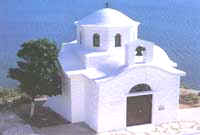 |
|
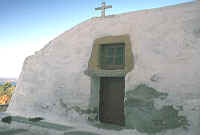 |
|
Patmos was at times colonized by the Doriens and thereafter followed the Ionians. It is said that the mythology hero Oreste pursued by the Erinnyes, because he killed his mother Clytemnestra, took shelter in Patmos, coming with the Argiens. The walls of the 6th and 4th centuries BC, of the ancient Acropole situated over the hill Castelli, are evidencing the location of the ancient town. |
|
|
From the well preserved until now relics, it is to be supposed that into the Acropolis ground existed at times the Apollon Temple, the Bacchus Temple and the Hippodrome. Old cemeteries, pottery fragments, carved works in bas-reliefs, inscriptions, sepulchral stones and other dispersed or framed into walls sculptures of the Christian orthodox churches, all said evidences are a proof of the flourishing and prosperous stand of the ancient Patmos. |
|
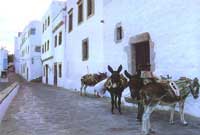 |
|
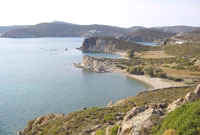 |
|
At the former ancient age it was particularly adored in Patmos the goddess Diane, who was considered as the Patroness of the island. Under the domination of the Romans, the island failed to decline. It was abandoned and used as an exile place. In the year 96 AD, the Evangelist Saint Jean the Theologue was banished in Patmos by the emperor Domitian for preaching the Gospel at Ephesus. |
|
|
This is the reason that the island of Patmos became the center of the Orthodox Religion and moreover is got famous. In the island the Apostole Saint Jean wrote the Apokalypsis and he says in his prologue: "I dwelled in an island of which name is Patmos, as to preach the word of God and have faith in the martyrdom suffered by Jesus Christ". Saint Jean, during his exile in Patmos lodged into a grotto of which today's name is "Apokalypsis". |
|
 |
|
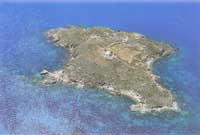 |
|
At the Emperor's death in 97 AD John returned to Ephesus where he lived to a ripe old age. A text entitled "Voyages and Miracles of St. John the Theologian" written by his disciple Prochoros was embraced by the Byzantine tradition and by the Christians in Patmos.
In the year 1088 AD disembarked in Patmos Saint Christodoulos (or Osios Christodoulos), native of Nicaea Bithynie coming from the islands Kos and Leros, where he had founded several nunneries. |
|
|
The Saint applied to the Emperor of Byzantium Alexios Comninos 1st, who signed a did of gift by which he yielded to him the island of Patmos as to lead there His life of hermit. The Saint founded in Patmos a great Monastery dedicated to St. Jean the Theologue. The island was conquered by the Turks (1537 AD) being rendered without to offer resistance. This is why the island enjoyed several privileges granted to it by the conquerors. |
|
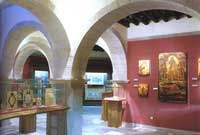 |
|
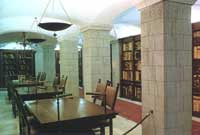 |
|
In 15th century refugees from Constantinople settled in Patmos and in the 17th century Cretans from Heraklio sought the monastery's protection. The Monastery of Patmos during the of Turks' domination had developed the highest educative activity and safeguarded the relics of Greeks. Particularly, the foundation at Patmos, in the year 1713, of the school "Patmia Scholi" had transformed the island in an important educative center. |
|
|
The patriots Xanthos and Themelis, foundators of the "Philiki Heteria" (Friendship Association), which aimed the deliverance of the Greek Nation, both of them were originally and glorious sons of Patmos island. The shipping industry grew as Patmos traded with Europe and Asia Minor; local crafts were exported. In 1659 Venetians under Francesco Morosini sacked the island with the exception of the monastery. |
|
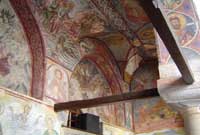 |
|
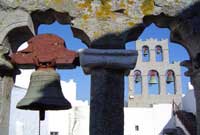 |
|
Although Patmos was active in the cause of Greek independence it remained under Ottoman rule under the terms of the Treaty of Constantinople (1832) and as it was cut off from the new western style Greek state, its prosperity declined. In the year 1912 Patmos was occupied by Italians, together with the other islands of Dodecanese. The island acquired its liberty by the end of World War II. Later, at March 7th 1948 its union with Greece was a fact. |
|
|
 |
|
|
|
|
 |
|
|
|
While following your Biblical tour program in Turkey, you may use our boats to take your group to Patmos Island for a daily trip. By chartering the boat, you may visit this holy island, tour the Monastery of St. John, The Holy Cave, and have a Mass. Private ferryboat charter service for Samos and Patmos Islands, Greece. |
|
|
|
|
|
 |
|